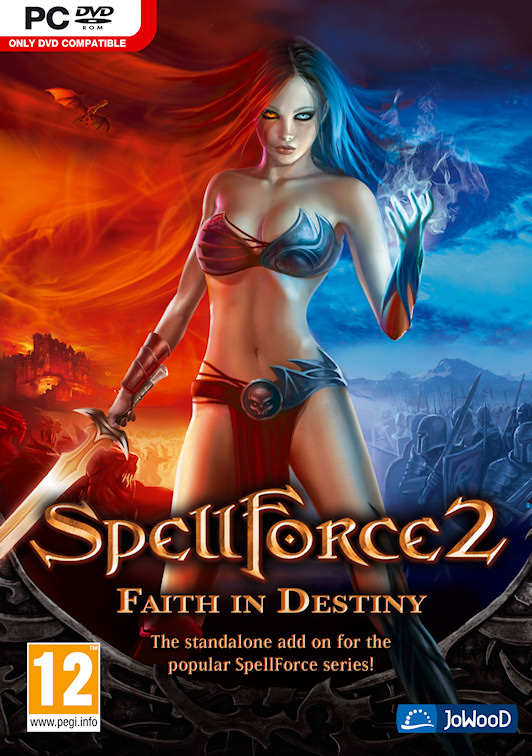SpellForce 2: Faith in Destiny Review
-
Category: ReviewsHits: 19603

Article Index
Page 1 of 2
IntroductionPhenomic Game Development released SpellForce: The Order of Dawn in 2004. This first game in the SpellForce franchise combined together RPG (role-playing game) and RTS (real-time strategy) elements into sort of a clunky but entertaining whole. Then after two expansion packs, Phenomic released SpellForce 2: Shadow Wars in 2006. This second game in the franchise received a lot of polish over the first, and so it looked and sounded better, and it had a much smoother interface, but Phenomic also streamlined and simplified a lot of the elements, and so the sequel wasn't necessarily better than the original. A short time later, Phenomic was purchased by EA (and became EA Phenomic), and after releasing one more expansion pack in 2007, the SpellForce franchise went into hibernation.
At some point during the last five years, Mind Over Matter Games (under the JoWooD umbrella) gained the keys to the SpellForce kingdom, but rather than developing a brand new game in the franchise, they decided to create a stand-alone expansion pack for SpellForce 2. This seems like a questionable decision -- are players really clamoring for an extra campaign to a six-year-old game? -- but after playing Faith in Destiny, I think I understand. No part of the game speaks of quality, and so perhaps a cut-and-paste expansion pack is the best thing that Mind Over Matter could produce.
Characters
The first thing you do in a game of SpellForce 2: Faith in Destiny is create an avatar for yourself. In one of many cost-cutting moves by Mind Over Matter, this character can only be male (cutting out the need for a female voice actor), and since Faith in Destiny like all of the other SpellForce games uses a classless system, that means you only need to choose a name and an appearance for your avatar before jumping into the action.
Each time you gain a level for your avatar (by completing quests and defeating monsters), you receive a point to spend on skills. Faith in Destiny uses roughly the same skill trees as SpellForce 2: Dragon Storm, which means you can put points into Combat (ranged and melee skills), Magic (offensive and defensive spells), and Shaikan (dragon blood skills). The maximum level in the game is 30, which allows you to learn a branch or two of the trees, with some points left over for extras.
As you play through the campaign, you meet some "heroes" who join you. These heroes can be developed and equipped just like your avatar, and so Faith in Destiny is more about creating a formidable party rather than a single unbeatable character. You also sometimes meet "companions," who you can control for a short time, but who can't be equipped or developed. All of these characters appear on the battlefield just like regular offensive units, with the difference being that they're much more powerful.
One new thing in Faith in Destiny is that you also meet a dragon who allows your avatar to mount it. Oddly, you're not allowed to attack anything with your avatar or the dragon while your avatar is mounted, and so the dragon ends up being much more powerful in its role as a companion, where its powerful fire attacks can decimate groups of enemies, rather than as a mount, where there are only a handful of places your avatar needs to be flown to.
Factions
Faith in Destiny comes with five factions: the Realm (humans, dwarves and elves), the Pact (dark elves, assassins and gargoyles), the Clans (orcs, trolls and berserkers), the Shaikan (shaikan, blades and drakelings), and the Nameless (a mix of weird demon-alien creatures). The first four of these factions were available previously. The Nameless is new.
The factions in the game all work about the same. Starting with a headquarters, you hire peons to gather resources (silver, stone and lenya), and then you use the resources to build and upgrade structures and recruit an army. Each faction has a building that acts as a defensive tower, another that allows you to increase the unit cap (up to 80), and three others for recruiting military units. Once you've learned how to play one faction, you've basically learned how to play them all.


